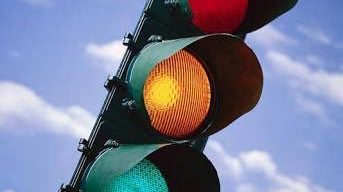Understanding the traffic lights in Japan is one of the basics you should know beforehand if driving is your option to travel around the country. Disregarding it may put you in a stressful situation that you don’t want to occur during your travel.
Generally, traffic lights are installed on streets to maintain road safety, control traffic movement, and prevent accidents. In Japan, you can see various types of traffic lights installed in every prefecture. What are those types?
Read on to learn more about the traffic lights in Japan, particularly:
- traffic signal lights color and their meanings
- types of traffic signals
- Japan traffic light violations and penalties
Traffic Signal Lights Color and Their Meaning
Green
This traffic color is a signal for the pedestrian to cross. Vehicles may also go straight or turn left or right, except for lightweight ones. They must stop and wait before they can turn right.
Yellow
Pedestrians who are still on the side of the road must stop. Those who are on the crossing must speed up to cross or go back if they can. Vehicles need to stop, too. However, if it runs fast and cannot stop when the yellow light is on may proceed in its direction. It would be unsafe for it to stop immediately.
Red
It means stop. Tuning left is not even allowed. But, if a vehicle has already turned left or right before the red light is on, it may continue moving.
Green right arrow
When this light is on, it means that any vehicle may turn right or make a U-turn even if the traffic light is red or yellow.
Yellow right arrow
This signal indicates that cars or trams may turn right even when the red or yellow traffic light is on. For pedestrians and other vehicles, this means they must stop.
Flashing yellow light
Pedestrians and any vehicle can move but with caution.
Flashing red light
Pedestrians can cross but must remain cautious. Cars and other vehicles must stop at the crossing before they can move forward.
Did you know why Japan used blue color for (Go) traffic light instead of green?
Well, it doesn’t mean that their go traffic lights are literally blue. People in Japan preferred to use blue or ao to describe green traffic lights even they are clearly green or midori.
7 Types of Traffic Lights in Japan
Achieving road safety in a developed country like Japan is a top priority. They have various traffic light types installed depending on the shape of the intersection, traffic volume, and location. Here are the seven kinds.
1. Sensitive Type
It is a type of traffic light that uses a detector. These traffic lights are installed on the road or at the intersection entrance, and it changes the signal to green only when vehicles or pedestrians crossing on the road.
2. Push-Button Type
A traffic light uses a push-button. It allows pedestrians to cross the street by pressing the button to turn the traffic light signal to green.
3. Fixed Cycle Formula
A traffic light type that repeatedly displays green, yellow, and red signals at a fixed time to organize passing vehicles and pedestrians.
It has another type of program that uses a multi-stage system that can change the signal display by determining the time of day and day of the week when there is heavy traffic with a time switch.
4. Staggered signal
This traffic light type is used to improve traffic congestion by extending the green light in one direction. It is installed on a road where many vehicles are turning right.
5. Arrow Type
The arrow signal located just below the three-color traffic lights. The vehicles can move in the direction of the green arrow even the three-color signal light becomes red.
This arrow signal has two types.
- Right turn arrow signal
- Separate arrow signal
6. Separate Pedestrian-Vehicle
A type of traffic light that aims for pedestrians’ safety crossing by separating pedestrians and vehicles. The pedestrian lights turn green when the traffic signal light for vehicles is on full red.
It has two systems:
- pedestrian-only display (do not allow pedestrians to cross diagonally)
- scramble (pedestrians can cross diagonally)
7. Pedestrian support information system
It’s a system using audio signals to secure and facilitate the crossing of visually impaired and blind people.
Traffic Lights Violations in Japan
Vehicles, as well as pedestrians on the road, should comply with traffic light rules. Violating Article 7 of the Road Traffic Act resulted in offenses and penalties.
Japan implements a demerit point system for traffic violations. Whenever you make a violation, you will get demerit points and face a consequence accordingly. More points given may lead to suspension or cancellation of your driver’s license.
If you fail to follow a traffic light rule, you get a demerit point of 2. However, if you have other offenses other than that, you will get additional points.
For example, if the driver did not stop at a red light because he did not notice it while using a cell phone, he gets three demerit points.
The more points you get, the heavier the consequence will be. If it leads to license revocation, you will not be able to drive or renew your driver’s license for a year. You surely don’t want that to happen to you.
The table below shows the points or scores and the corresponding penalties when disregarding traffic light signals.
Type of Traffic Light Violation: Signal Disregard (red, etc.) | ||
| Type of Vehicle | Score | Penalty |
| Large car | 2 | 12,000 Yen |
| Standard-sized car | 2 | 9,000 Yen |
| Motorcycle | 2 | 7,000 Yen |
| Small special car | 2 | 6,000 Yen |
| Moped car | 2 | 6,000 Yen |
Type of Traffic Light Violation: Blinking Disregard | ||
| Type of Vehicle | Score | Penalty |
| Large car | 2 | 9,000 Yen |
| Standard-sized car | 2 | 7,000 Yen |
| Motorcycle | 2 | 6,000 Yen |
| Small special car | 2 | 5,000 Yen |
| Moped car | 2 | 5,000 Yen |
List of Traffic Violation Points and List of Offenses and Penalties from the Tokyo Metropolitan Police Department website.
*As of April 2020
Traffic light colors and meanings in Japan are just the same as what you get used to. However, this modern country installed several types of traffic signal devices that are not common in your country.
Therefore, a better understanding of Japan’s traffic lights would help you avoid traffic light violations, penalties, and unforeseen accidents.
To learn more about the Japanese language and its culture, we recommend you study in Japan. Also, we recommend you use the must-have language apps for first-time visitors in Japan. In this way, you will enjoy exploring this beautiful country while learning their language.









